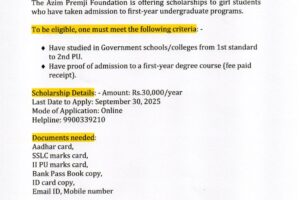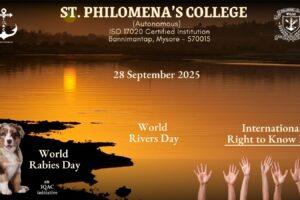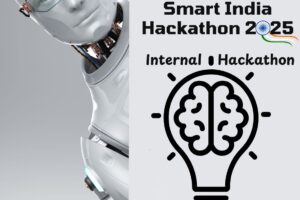
INDUSTRIAL VISIT TO KOCHI
REPORT ON
INDUSTRIAL VISIT TO KOCHI
Date: 10-12th of February 2025
Place: Kochi, Kerala
No. of Participants:-
Students: 21 Staff : 04
Introduction: An industrial visit plays a crucial role in connecting classroom learning with real-world applications. As part of our academic curriculum, students from the Department of Chemistry and Biochemistry embarked on an educational trip to Kochi to explore various industries and research institutions. This report details our educational excursion, which involved exploring facilities like Travancore Cochin Chemicals, BioNEST, and the National Institute of Oceanography (NIO).

Twenty-one chemistry and biochemistry studentsfrom the 2024-25 batch (second and third year) accompanied by four staff members participated in the study tour from February 9th to 13th, 2025. The journey commenced from Mysuru at 12:30 PM on February 9th aboard the Tirunelveli Express, arriving in Ernakulam, Kerala, the following morning at 4:30 AM.
Objectives of the Visit
1. Gain practical, real-world experience in chemistry and biochemistry related industries.
2. Familiarize students with the operational procedures of chemical production plants and research organizations.
3. Showcase the implementation of quality control and environmental safety standards in industrial environments.
4. Facilitate interaction between students and professionals/researchers for knowledge sharing and career advice.
5. Illustrate the importance of industrial waste management and sustainable practices.
6. Increase student understanding of potential career and research opportunities in chemistry and biochemistry.
Day 1: 10-02-2025
Industries Visited
1. Travancore Cochin Chemicals (TCC)
Travancore Cochin Chemicals is a major chemical manufacturing company specializing in the production of caustic soda, chlorine, hydrochloric acid, and sodium hypochlorite. This visit offered the students an in-depth understanding of large-scale chemical manufacturing, safety procedures, and industrial waste management practices.

Production Units:
i) Caustic Soda Production Unit: Insight into the electrolysis process (sodium hydroxide, chlorine, and hydrogen separation).
ii) Chlorine Processing Unit: Explanation of chlorine gas liquefaction and storage for applications like water treatment and PVC manufacturing.
iii) Hydrochloric Acid Unit: Demonstrations on synthesis and applications in pharmaceuticals and other chemical industries.
iv)Sodium Hypochlorite Unit: Highlighted the production of bleaching agents and disinfectants for public sanitation and water purification.
v) Waste Treatment Facility: Observation of TCC’s management of industrial effluents and environmental regulation compliance.

2. National Institute of Oceanography (NIO)
Time of visit: 2:30 – 4:00pm
The National Institute of Oceanography (NIO) is a premier research institute dedicated to the study of marine sciences, focusing on oceanographic research, climate change, marine biodiversity, and coastal ecosystem conservation. The visit provided students with insights into various aspects of oceanography, including marine chemistry, biological oceanography, and environmental sustainability.
Research Facilities at NIO
During the visit, students were given an overview of the institute’s specialized research divisions and laboratories:
i) Marine Chemistry Laboratory: Focuses on seawater composition, pollution assessment, and the impact of industrial waste on marine ecosystems. Researchers explained how heavy metal contamination and oil spills are analyzed and mitigated.
ii) Biological Oceanography Unit: Studies marine biodiversity, plankton ecology, and the biochemical properties of marine organisms for potential pharmaceutical applications.
iii) Coastal and Marine Geology Lab: Investigates sediment transport, coastal erosion, and underwater mineral resources, providing insights into sustainable marine resource management.
iv) Marine Biotechnology Lab: Engaged in discovering bioactive compounds from marine microorganisms, seaweed cultivation, and applications in drug development and cosmetics.
v) Climate and Ocean Modelling Center: Uses advanced computational models to predict climate change effects on ocean currents, sea level rise, and monsoon patterns.
vi) Underwater Exploration and Remote Sensing Facility: Demonstrates the use of sonar mapping, satellite imaging, and autonomous underwater vehicles (AUVs) for deep-sea research.
Technology Demonstrations and Observations:
Students witnessed various oceanographic research technologies in action:
i) Water Sampling and Analysis: A live demonstration of how oceanographers collect seawater samples at different depths to study salinity, pH levels, dissolved oxygen, and nutrient content.
ii) Plankton and Microbial Analysis: Observation of marine plankton species under high-resolution microscopes, with discussions on their role in the marine food chain and carbon cycle.
iii) Deep-Sea Exploration Equipment: Presentation on remotely operated vehicles (ROVs) and their role in exploring the ocean floor for scientific and commercial applications.
iv) Marine Renewable Energy Research: Insights into wave and tidal energy potential, including prototypes of devices harnessing ocean power for sustainable electricity generation.
v) Ocean Pollution Monitoring Systems: A demonstration of how real-time sensors and satellite data are used to track oil spills, plastic waste accumulation, and coral reef health.
The visit to NIO broadened the students’ understanding of ocean science and its importance in tackling global environmental issues.
Day 2: 11-02-2025, Time: 9:30- 1:00pm
1. BioNEST Visit: Research Facilities and Technology Demonstrations
BioNEST serves as a biotechnology incubation hub, fostering innovation and supporting start-ups in biosciences. The facility provides an ecosystem for entrepreneurs, researchers, and scientists to develop cutting-edge technologies in various domains such as bio pharmaceuticals, agricultural biotechnology, and environmental sustainability.
Research Facilities and Technology Demonstrations
The visit included a tour of BioNEST’s state-of-the-art research laboratories and collaborative workspaces, which focus on:
i) Molecular Biology and Genetic Engineering Labs: Equipped with advanced PCR machines, gene sequencing tools, and CRISPR technology for research in genetic modifications and biomolecular studies.
ii) Cell Culture and Bioprocessing Units: Supporting research in biopharmaceuticals, including vaccine development, regenerative medicine, and stem cell research.
iii) Bioinformatics and Computational Biology Center: Utilizing AI and data analytics for genomic research, drug discovery, and protein structure analysis.
iv) Bioproducts and Bio-materials Development Labs: Focused on creating sustainable alternatives such as biodegradable plastics and plant-based biofuels.
v) Environmental Biotechnology Unit: Engaged in wastewater treatment solutions, bio-remediation techniques, and microbial fuel cell research.
Technology Demonstrations:
During the visit, students observed hands-on demonstrations of emerging biotechnological applications, including:
i) 3D Bioprinting: A demonstration of how living cells can be printed into tissue structures for medical research.
ii) Biosensors for Rapid Diagnostics: A startup showcased a portable biosensor that detects pathogens in water samples within minutes, revolutionizing water safety testing.
iii) Microbial Fermentation Techniques: Students observed the production of bio enzymes used in industries like food processing, textiles, and waste management.
iv) Precision Agriculture Technology: A demonstration on biofertilizers and plant growth-promoting bacteria for sustainable farming.
v) Synthetic Biology Applications: Insights into how engineered microbes are being used for biofuel production and environmental cleanup.
The visit to BioNEST provided students with a profound understanding of how biotechnology is shaping the future, inspiring them to explore research and entrepreneurial opportunities in the field.
Day 3: 13-02-2025
Sight-seeing in Kochi:A Blend of History, Culture, and Scenic Beauty
Day 3, February 13th, 2025, was dedicated to exploring the diverse attractions of Kochi, often called the “Queen of the Arabian Sea.” This vibrant coastal city in Kerala offers a rich blend of history, culture, and natural scenic beauty. The sightseeing included visits to historical landmarks and picturesque waterfronts.
Mattancherry – A Blend of History, Culture, and Trade
Mattancherry is a historic and culturally rich neighbourhood in Kochi, Kerala, known for its colonial influences, spice markets, and heritage sites. It is a must-visit destination for history lovers, art enthusiasts, and those interested in Kerala’s diverse cultural fabric.
Historical Significance
Mattancherry was once a prominent trading hub where merchants from across the world— Portuguese, Dutch, British, Arabs, and Jews—came for spices, textiles, and other goods. This has resulted in a beautiful mix of architectural styles, traditions, and communities.
Major Attractions in Mattancherry
Jew Town – A vibrant street lined with antique shops, spice markets, and handicraft stores, reflecting the influence of the Jewish community. The scent of cardamom, cinnamon, and pepper fills the air.
Paradesi Synagogue – Built in 1568, this is the oldest active synagogue in the Commonwealth. It features hand-painted Chinese tiles, Belgian chandeliers, and ancient Hebrew scriptures. The synagogue is a testament to the once-thriving Jewish community in Kochi.
Mattancherry Palace (Dutch Palace) – Originally built by the Portuguese in the 16th century and later renovated by the Dutch, this palace showcases Kerala murals depicting scenes from Ramayana and Mahabharata, royal artifacts, and portraits of Kochi’s rulers.
Museum (Hill Palace or Kerala Folklore Museum) – The Hill Palace in Tripunithura is Kerala’s largest archaeological museum, showcasing royal artifacts and paintings. The Kerala Folklore Museum in Thevara houses a vast collection of antiques, folk art, and cultural exhibits reflecting Kerala’s rich heritage.
Spice Markets – Mattancherry is famous for its spice trade, with numerous shops selling cardamom, pepper, turmeric, and exotic blends used in Kerala cuisine.
Vallarpadam Basilica (National Shrine of Our Lady of Ransom)
History: Originally built in 1524 by the Portuguese, it was later reconstructed in 1676 after being destroyed by floods. In 1888, it was elevated to the status of a Basilica by Pope Leo XIII.
Special Features: Recognized as a National Shrine by the Vatican.It houses the miraculous portrait of Mother Mary (Vallarpadathamma), believed to protect fishermen and travellers.
St. Mary’s Basilica, Ernakulam
Significance: One of the oldest churches in Kerala, the first Basilica in Kerala (since 1973) History: Built in 1112 AD, it was originally a small church and was later reconstructed multiple times.
Special Features: Gothic-style architecture with tall spires and stained-glass windows. It is a major place of worship for the Syro-Malabar Catholic community.
Outcome of the Visit
The industrial visit to Kochi provided students with a valuable opportunity to bridge the gap between academic knowledge and real-world industrial applications. The key outcomes of the visit include:
·Enhanced Understanding of Industrial Processes: Students gained firsthand exposure to chemical and biochemical manufacturing, biotechnology incubation, and oceanographic research methodologies.
·Exposure to Advanced Research and Technology: The visit provided insights into cutting-edge technologies such as bioprocessing, genetic engineering, marine biodiversity studies, and deep-sea exploration.
·Awareness of Industrial and Environmental Safety Measures: Observing quality control procedures, safety protocols, and waste management systems helped students understand the importance of environmental sustainability in industries.
·Career and Research Opportunities: Interactions with industry experts and researchers broadened students’ perspectives on career paths in industrial chemistry, biotechnology, marine research, and environmental science.
·Inspiration for Innovation and Entrepreneurship: The visit to BioNEST particularly encouraged students to explore biotech entrepreneurship, research innovations, and start-up opportunities.
·Real-World Applications of Theoretical Concepts: Students connected classroom knowledge with industrial processes, such as electrolysis in chemical production, bio-based material development, and the chemistry of oceanic ecosystems.
Conclusion
The industrial visit to Kochi proved to be an exceptionally valuable and enlightening experience for the Chemistry and Biochemistry students. The exposure to large-scale chemical operations at Travancore Cochin Chemicals, the innovative environment at BioNEST, and the cutting-edge marine research at the National Institute of Oceanography (NIO) provided a comprehensive view of their disciplines’ diverse applications.
The students developed a greater appreciation for the evolving nature of scientific advancements and industry needs. This trip not only reinforced their technical understanding but also inspired them to consider new career paths, research opportunities, and entrepreneurial ventures. The insights gained will undoubtedly provide a robust foundation for their future academic and professional journeys.
Day 3: 13-02-2025
Sight-seeing in Kochi:A Blend of History, Culture, and Scenic Beauty
Day 3, February 13th, 2025, was dedicated to exploring the diverse attractions of Kochi, often called the “Queen of the Arabian Sea.” This vibrant coastal city in Kerala offers a rich blend of history, culture, and natural scenic beauty. The sightseeing included visits to historical landmarks and picturesque waterfronts.
Mattancherry – A Blend of History, Culture, and Trade
Mattancherry is a historic and culturally rich neighbourhood in Kochi, Kerala, known for its colonial influences, spice markets, and heritage sites. It is a must-visit destination for history lovers, art enthusiasts, and those interested in Kerala’s diverse cultural fabric.
Historical Significance
Mattancherry was once a prominent trading hub where merchants from across the world— Portuguese, Dutch, British, Arabs, and Jews—came for spices, textiles, and other goods. This has resulted in a beautiful mix of architectural styles, traditions, and communities.
Major Attractions in Mattancherry
Jew Town – A vibrant street lined with antique shops, spice markets, and handicraft stores, reflecting the influence of the Jewish community. The scent of cardamom, cinnamon, and pepper fills the air.
Paradesi Synagogue – Built in 1568, this is the oldest active synagogue in the Commonwealth. It features hand-painted Chinese tiles, Belgian chandeliers, and ancient Hebrew scriptures. The synagogue is a testament to the once-thriving Jewish community in Kochi.
Mattancherry Palace (Dutch Palace) – Originally built by the Portuguese in the 16th century and later renovated by the Dutch, this palace showcases Kerala murals depicting scenes from Ramayana and Mahabharata, royal artifacts, and portraits of Kochi’s rulers.
Museum (Hill Palace or Kerala Folklore Museum) – The Hill Palace in Tripunithura is Kerala’s largest archaeological museum, showcasing royal artifacts and paintings. The Kerala Folklore Museum in Thevara houses a vast collection of antiques, folk art, and cultural exhibits reflecting Kerala’s rich heritage.
Spice Markets – Mattancherry is famous for its spice trade, with numerous shops selling cardamom, pepper, turmeric, and exotic blends used in Kerala cuisine.
Vallarpadam Basilica (National Shrine of Our Lady of Ransom)
History: Originally built in 1524 by the Portuguese, it was later reconstructed in 1676 after being destroyed by floods. In 1888, it was elevated to the status of a Basilica by Pope Leo XIII.
Special Features: Recognized as a National Shrine by the Vatican.It houses the miraculous portrait of Mother Mary (Vallarpadathamma), believed to protect fishermen and travellers.
St. Mary’s Basilica, Ernakulam
Significance: One of the oldest churches in Kerala, the first Basilica in Kerala (since 1973) History: Built in 1112 AD, it was originally a small church and was later reconstructed multiple times.
Special Features: Gothic-style architecture with tall spires and stained-glass windows. It is a major place of worship for the Syro-Malabar Catholic community.
Outcome of the Visit
The industrial visit to Kochi provided students with a valuable opportunity to bridge the gap between academic knowledge and real-world industrial applications. The key outcomes of the visit include:
·Enhanced Understanding of Industrial Processes: Students gained firsthand exposure to chemical and biochemical manufacturing, biotechnology incubation, and oceanographic research methodologies.
·Exposure to Advanced Research and Technology: The visit provided insights into cutting-edge technologies such as bioprocessing, genetic engineering, marine biodiversity studies, and deep-sea exploration.
·Awareness of Industrial and Environmental Safety Measures: Observing quality control procedures, safety protocols, and waste management systems helped students understand the importance of environmental sustainability in industries.
·Career and Research Opportunities: Interactions with industry experts and researchers broadened students’ perspectives on career paths in industrial chemistry, biotechnology, marine research, and environmental science.
·Inspiration for Innovation and Entrepreneurship: The visit to BioNEST particularly encouraged students to explore biotech entrepreneurship, research innovations, and start-up opportunities.
·Real-World Applications of Theoretical Concepts: Students connected classroom knowledge with industrial processes, such as electrolysis in chemical production, bio-based material development, and the chemistry of oceanic ecosystems.
Conclusion
The industrial visit to Kochi proved to be an exceptionally valuable and enlightening experience for the Chemistry and Biochemistry students. The exposure to large-scale chemical operations at Travancore Cochin Chemicals, the innovative environment at BioNEST, and the cutting-edge marine research at the National Institute of Oceanography (NIO) provided a comprehensive view of their disciplines’ diverse applications.
The students developed a greater appreciation for the evolving nature of scientific advancements and industry needs. This trip not only reinforced their technical understanding but also inspired them to consider new career paths, research opportunities, and entrepreneurial ventures. The insights gained will undoubtedly provide a robust foundation for their future academic and professional journeys.



